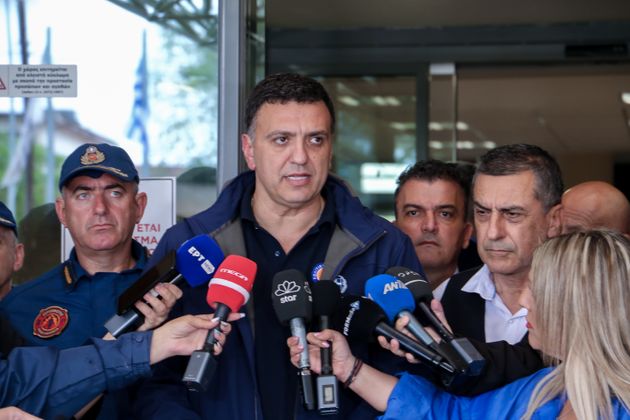An article originally published in
Missionalia, the journal of the Southern African Missiological Society.
Most histories of Christian mission in Africa, even those that are ostensibly ecumenical or pan-Christian, make little or no mention of Orthodox Church missions in Africa.1
There are several possible reasons for this, among them a bias on the part of many mission historians in favour of missions that were established before 1950 (Fiedler 1995:92). Most, though not all, Orthodox missions in tropical Africa began after that date. Another possible reason is that even those Orthodox missions that began before 1950 were not regarded as “mainstream” by the established Roman Catholic and Protestant missions, because they were identified with African independent church movements, which at that time were regarded by the Western churches as a problem for mission rather than a form of mission. The identification of Orthodoxy with the struggle against colonialism was also an embarrassment at that time. One Kenyan, writing of such attitudes, referred to “those who in their calculated ignorance misinterpret African-Christian-Orthodoxy as ‘paganism’” (Lemopoulos 1993:123).
Much of what has been published in English has been fragmentary, dealing with a particular place or period. Orthodox mission in tropical Africa has had its ups and downs, and the situation has changed rapidly, so that descriptions of what was happening at times in the past may not apply today. Orthodox mission today is characterised by a huge variety. Just about every mission method ever found in any part of the world, at any time in Christian history, can be found here. The purpose of this article, therefore, is to try to give a broad survey of Orthodox mission in this part of the world. It is primarily historical and descriptive, rather than an analysis of the theology of mission. Obviously such a survey must be lacking in detail, but it should at least provide the context for interpreting other more specialised studies.
The Orthodox Church in Africa falls under the jurisdiction of the Pope and Patriarch of Alexandria and All Africa, and its history goes back to the first century. The tradition of the patriarchate is that it was established by St Mark in AD 62. In the first few centuries it was confined to North Eastern Africa. The North Western part was under the jurisdiction of the Pope of Rome. At first Christianity had only a rather precarious toe-hold on the African continent, but towards the end of the second century it became indigenous, and spread rapidly among the native Egyptian population (rather than the Graeco-Roman ruling class). The third and fourth centuries were marked by the ascendancy of Alexandrian Christianity. The churches of Alexandria, Antioch and Rome were the three most influential churches. In the fourth century Jerusalem and Constantinople were also recognised as patriarchates, and Constantinople, the new imperial capital, was given precedence over Alexandria. This led to a certain amount of rivalry, which tended to exacerbate some of the theological disputes in the following centuries.
It was in this period that the Patriarchate of Alexandria was the originator of two developments that influenced the entire Christian world for centuries to come. The first was the development of monasticism, which soon spread to other places, and became the main instrument of mission for over a thousand years. The second was the Arian controversy, which led to the formulation of the “Nicene Creed”, which, with some variations, has been accepted as the basic statement of faith of Christians in most parts of the world.
In the fifth century, following the Council of Chalcedon, there was a split in the Church of Alexandria, and since then there have been two rival popes in Alexandria, the Coptic and the Byzantine (see Isichei 1995:29). The Byzantine Patriarchate of Alexandria remained in communion with the other patriarchates of Rome, Constantinople and Antioch, while the Coptic patriarchate did not. The schism affected mission. Ethiopia, which had been evangelised in the fourth century, was affiliated with the Coptic Patriarchate, while two rival missions were sent to Nubia. The Arab conquest of Egypt in the seventh century put an end to any further mission efforts for centuries to come. Both the Byzantine and Coptic Patriarchates were engaged in a struggle for survival. In this article I deal mainly with the Byzantine patriarchate.
Below the Tropic of Cancer, Christian influence only began to be felt when Western Christians (who were by then separated from the Orthodox, and divided among themselves into Roman Catholic and Protestant groups), began sailing round the sea coasts of Africa. Their main interest was Asian trade, and Africa remained incidental to their concerns until the plantation economy of the Americas made the trans-Atlantic trade in African slaves lucrative. Christian missions from those countries gradually fostered an aversion to the slave trade, and sought to introduce “legitimate commerce”, but national rivalries led to the “scramble for Africa” and the parcelling out of most of sub-Saharan Africa among the European powers by the end of the nineteenth century.
Immigrant Greek communities
Among those from Europe who settled in Africa were traders from Orthodox countries, mainly from Greece. The churches in their countries of origin initially showed little interest in their emigrant flock. The immigrant communities, however, formed themselves into “koinotites” (communities), which sought to meet the needs of the immigrants, cultural, educational, recreational and religious. Clergy were sent to minister to these communities, initially by the Ecumenical Patriarchate in Constantinople, which was responsible for the Orthodox Christians who were beyond any other Orthodox jurisdiction. Eventually, however, all such communities in Africa were transferred to the jurisdiction of the Patriarchate of Alexandria.
Southern Africa
In 1908 such a priest, Father Nicodemus Sarikas, was sent to the community in Johannesburg, in the recently-conquered British colony of the Transvaal. Fr Nicodemus, however, was also interested in mission beyond the confines of the Greek community, and in this his views were at variance with those of the community, which expected him to function purely as a chaplain to the immigrants. After a few years, Fr Nicodemus left, and settled in what is now Tanzania.
A few years earlier another development took place in the Johannesburg area. In 1892 a group of black Methodists, unhappy with racism in the Methodist Church, broke away to form the Ethiopian Church. The Ethiopian Church later split into several groups, some of which were interested in episcopacy, and formed links with the African Methodist Episcopal Church of the USA, or with the (Anglican) Church of the Province of South Africa. In the 1920s one of the clergy of the Ethiopian Church, Daniel William Alexander, made contact with the African Orthodox Church, which had recently been formed in the USA, and eventually was ordained a bishop of that church.
The African Orthodox Church (AOC) was the offspring of the Pan African movement, one of the leading figures of which was Marcus Garvey, the founder of the Universal Negro Improvement Association (UNIA). Some of the clergy associated with the movement conceived the idea of forming a single black church, and one of the main proponents of this view was an Anglican priest, George Macguire, who sought affiliation with the Orthodox Church as a black ethnic jurisdiction (Platt 1989:474ff). He approached the Russian Orthodox bishop in the USA, but at that time, immediately after the Bolshevik Revolution in Russia, the Orthodox Church in America was in a difficult position. The Russian bishop was also con- cerned about the ethnic exclusiveness that Macguire seemed to want. George Macguire was eventually ordained bishop by Rene Joseph Vilatte, an
episcopus vagans who had himself been consecrated in dubious circumstances by a Syrian Jacobite bishop in India (Anson 1964:105ff). In 1935 the Syrian Jacobite Patriarchate of Antioch declared his episcopal orders null and void.
Daniel William Alexander was nevertheless consecrated bishop by Patriarch Macguire of the African Orthodox Church, and returned to South Africa, and established the African Orthodox Church among his followers there. The African Orthodox Church was one of the few African independent churches to receive government recognition. Recognition gave certain advantages, one of the chief of which was the legal authority to buy wine for communion (before 1962 blacks in South Africa were prohibited from buying “white” liquor). This was one factor that led other groups, such as some from the Ethiopian Catholic Church in Zion, to join the African Orthodox Church.2 In early 1993 some of the bishops and clergy of the African Orthodox Church in southern Africa were received into membership of the Coptic Patriarchate of Alexandria, and became known as the African Coptic Orthodox Church.3 Not all the members or clergy of the AOC joined the Coptic Church, however.
Uganda and Kenya
In the early 1930s Bishop Alexander travelled to Uganda at the invitation of Reuben Sseseya Mukasa (later known as Fr Reuben Spartas, and in 1973 he was consecrated as Bishop Christopherous of Nilopolis) and Obadiah Bassajjikitalo, two former Anglicans whose reading had led them to seek to join the Orthodox Church. Apparently they had discovered the address of Patriarch Macguire in an American publication, and written to him, and he in turn had asked Bishop Alexander to visit them. Alexander spent nine months in Uganda, from October 1931 to July 1932 teaching and baptising and ordained Mukasa and Bassajjikitalo before returning to South Africa (Zoe 1964:377). Among those he baptised was the daughter of a Greek living in Kampala, who said that the service used was unfamiliar. He encouraged the priests to make contact with the Patriarchate of Alexandria, and later in 1932 Fr Nicodemus Sarikas visited Uganda from Tanzania.
Alexander’s visit aroused the suspicions of the colonial authorities. Uganda was then a British Protectorate, and Kenya was a colony. The colonial secret police wrote to the South African authorities asking about his background, and informing them of his movements. Alexander returned to South Africa through Kenya, travelling on the train from Kampala to Mombasa. In Mombasa he spoke to a postal clerk, James Beutah, who came from the Central Province, and he asked Alexander what denomination he belonged to, because the Gikuyu (Kikuyu) people did not want to join foreign missions with colonial connections. Beutah informed Jomo Kenyatta, the future president of Kenya who was in then in England, of this meeting, and persuaded Alexander to return to Nairobi.4
In 1929 the Kikuyu of the Central Province of Kenya had formed two educational associations in protest against a missionary ban on female circumcision. Education in Kenya at that time was almost entirely under the control of foreign missions. The missions, led by John Arthur of the Church of Scotland Mission (CSM) announced that their African “agents” (who were mainly teachers) must sign a written declaration denouncing circumcision and membership of the Kikuyu Central Association (KCA), a body opposed to colonial rule (Natsoulas 1988:220).5 This had led to the formation of the Kikuyu Karing’a Educational Association (KKEA), and the Kikuyu Independent Schools Association (KISA), which sought to establish schools outside the control of foreign missions. Up till then all the schools in Kenya had been church schools, and so these bodies, having started schools, looked for a church. Bishop Alexander seemed to offer a solution, and the president of KISA wrote to Alexander, asking him to return to Kenya (Githieya 1992:156). Alexander replied, and also wrote to the Orthodox bishop of Johannesburg, asking for a letter of introduction to the Orthodox priest at Moshi, Tanganyika, and expressing an interest in a merger with the Greek Orthodox Church in South Africa (Githieya 1992:158).
Alexander returned to East Africa in November 1935. He founded a seminary where he trained eight students, seven sponsored by the KISA and one by the KKEA (Githieya 1992:160). He subsequently ordained two priests, Arthur Gatungu Gathuna and Philip Kianda Magu, and two deacons, Daudi Maina Kiragu and Harrison Gacukia Kiranga.
Alexander then returned to South Africa, but was unable to visit East Africa again because of the Second World War, and later the apartheid policy of the South African government. There was a strong perception among Africans in Kenya that the white rulers did not want them to know about Orthodoxy, since it was not associated with the colonial powers.6
In the meantime, the contact between the African Orthodox Church in Uganda and the Patriarchate of Alexandria was continuing. The Second World War made non-military travel difficult, but in 1942 Metropolitan Nikolaos of Axum visited East Africa, and wrote a report for the Holy Synod of the Patriarchate of Alexandria about the situation of the African Orthodox Churches there. The report was eventually published in book form.7
Fr Reuben Spartas and Fr Obadiah Bassajjikitalo of Uganda came to know of the Orthodox group in Kenya through newspaper reports, and visited Kenya, and encouraged the Kenyans to join the Patriarchate of Alexandria. There were two groups in Kenya. The African Orthodox Church, led by Gathuna, which was associated with the KKEA, and the African Independent Pentecostal Church, associated with the KISA. It was the former that sought linkswith the Patriarchate. They wrote a letter to Pope Meletios of Alexandria. The patriarch replied positively, but died before anything further could be done. They then wrote again to Pope Christopherous II and applied to be received into the patriarchate as a canonical Orthodox Church.8 This was officially done in 1946.
Meanwhile in Uganda Fr Nicodemus Sarikas had taken two young men back to Tanganyika to teach them the Orthodox faith, and in 1939 sent them to Pope Christopherous in Alexandria for further study. They were ordained and sent back to Uganda, but one of them died soon after their return. The other, Fr Irenaeus Magimbi, continued teaching for many years (Zoe 1964:379). In 1945 Fr Spartas sent another group of four young men to Egypt. After studying in Greek high schools in Egypt they went on to study theology at the University of Athens. Among them was Theodore Nankyamas, who is now Metropolitan of Uganda (Zoe 1964:379).
In Kenya, after the Second World War, the struggle against colonial rule intensified, and in 1952 the colonial authorities declared a state of emergency as a result of the activities of the Mau Mau guerrillas. The Orthodox Church was banned and its schools and temples were closed by the colonial regime. Many churches were burnt down by the armed forces, and the clergy put in concentration camps (Githieya 1992:181). During that period the Orthodox Church in Kenya was treated by the British colonial regime in the same fashion as the Bolsheviks treated the Russian Orthodox Church. Immediately after the Second World War the Orthodox Church had been growing rapidly, until it was banned in the 1950s. Orthodox Christians regarded the Roman Catholic and Protestant missions as collaborators with the regime, who sought to discredit and belittle the Orthodox Church, and conducted hostile propaganda against it.9
A similar struggle against colonial rule in Cyprus was being led by Archbishop Makarios, who in March 1956 was exiled to the Seychelles. In April 1957 he was released, and returned via Kenya, where people were still engaged in the struggle against colonial rule. He celebrated the Divine Liturgy in the Orthodox cathedral in Nairobi, and preached against colonialism (Lemopoulos 1993:122). This was a tremendous encouragement to the leaders of the Kenya independence struggle, many of whom (with the Orthodox clergy) were still in prison at the time. It also caused consternation among the British authorities, and questions were asked in the British parliament about why Archbishop Makarios had been allowed to preach in Kenya.10
A close friendship developed between Archbishop Makarios and Jomo Kenyatta, the future president of Kenya. Cyprus became independent in 1960, and Kenya in 1963, and in 1970 Archbishop Makarios, the first President of Cyprus, was invited to Kenya on a state visit by President Kenyatta of Kenya. Archbishop Makarios, as well as being President of Cyprus, was head of the autocephalous Church of Cyprus, and as such had no ecclesiastical jurisdiction in East Africa. But though he was visiting Kenya in his capacity of head of state, he also met church leaders, and visited Orthodox churches in various parts of Kenya.
Archbishop Makarios was struck by the poverty of the church and the people, and wrote to the Patriarchate of Alexandria offering to help. President Kenyatta provided a site for an Orthodox seminary at Riruta, on the outskirts of Nairobi, and Archbishop Makarios raised the money for the buildings. In 1971 he visited Kenya again to lay the foundation stone for the new seminary, though the patriarchate was not in a position to staff it and utilise it until 1982. At Kagira he baptised 5000 people, and at Nyeri he baptised 5000 more. These were both places where Bishop Alexander had visited and taught nearly 40 years previously.11
In 1958 the Patriarchate of Alexandria appointed a Metropolitan of Irinoupolis (Dar es Salaam) to care for Orthodox Christians in Tanzania, Kenya and Uganda. Metropolitan Nikolaos moved his headquarters to Kampala, but visited the other countries from there (Zoe 1964:379). In 1960 Archimandrite Chrysostom Papasarantopoulos went to Kampala, where he worked for ten years before moving to Zaire to begin a new mission there (Lemopoulos 1993:67). Through correspondence he also encouraged others to become involved in mission, among them the present Bishop Makarios of Riruta, Kenya. At that time the help of external missionaries in East Africa was greatly needed. After ten years of repression by the British colonial regime and the disingenuous propaganda of the Roman Catholic and Protestant missionaries who supported it, the Orthodox Church was in a parlous state (Zoe 1964:384-384).12
Metropolitan Nikolaos was elected Patriarch in 1968, and his successor as Metropolitan was Nicodemus, who ordained several new priests. The seminary site was blessed during his time.
He was succeeded in 1972 by Metropolitan Frumentius, who died in March 1981. There was little development during his time, and in fact there were some reverses, as Bishop George Gathuna (one of the original priests ordained by Daniel Alexander) was defrocked by the Holy Synod of the Patriarchate. He nevertheless continued to act as a bishop, and went into schism. He and his group became affiliated to a schismatic Old Calendrist group in Greece.
The leader of the Old Calendrist group, Cyprian of Fili, then consecrated a Bishop Kigundu, who became the leader when Gathuna died in 1986. Kigundu, however, was himself defrocked by the Old Calendrists when they found that he had secretly married, contrary to the canons. Most of the priests ordained by Gathuna and Kigundu after the schism have returned to the Orthodox Church. Some of them have been reordained.13
For several years there was no Metropolitan, but Bishop Anastasios Yannoulatos was appointed acting Metropolitan.14 Bishop Anastasios is one of the foremost Orthodox missiologists of the twentieth century, and since the 1950s had been encouraging a revival of interest in mission in the Orthodox Church.15
The seminary in Nairobi opened in Bishop Anastasios’s time, and it began with 19 students. It was originally only for students from East Africa, but in 1995 it began taking students from other African countries as well, and there were 42 students from seven countries – Kenya, Uganda, Tanzania, Cameroun, Nigeria, Zimbabwe and Madagascar. The aim is that the seminary should be a pan-African institution, and should foster a sense of unity in the Patriarchate. This decision has not been without its teething problems, however. The students from outside East Africa have suffered considerably from culture shock, and find the East African food difficult to cope with.
It is often said that Orthodox mission is centripetal rather than centrifugal, with people being attracted to Orthodoxy from the outside, rather than Orthodox churches sending missionaries out (Bosch 1991:207). The growth of Orthodoxy in Kenya and Uganda certainly seems to bear this out. It was largely the result of people in those countries seeking Orthodoxy, rather than Orthodox missionaries from elsewhere seeking them. The Orthodox Church in those countries may truly be said to be an African initiated church.16
Tanzania and Zimbabwe
In Tanzania the same pattern may be seen, but with some variations. As I noted earlier, Fr Nicodemus Sarikas went to Tanganyika from Johannesburg, partly because the Greek community in Johannesburg was not interested in mission. In East Africa he played an important role in enabling the African Orthodox Church in Uganda to become canonically Orthodox. There was a fairly large Greek community in the Arusha district of Tanganyika, but he was also engaged in evangelistic outreach among the local people, though with little lasting result, and in north-east Tanganyika the Orthodox community has diminished.
In North Western Tanganyika, however, the Orthodox Church has grown quite rapidly, and there is now a bishop at Bukoba, on the western shore of Lake Victoria. The Orthodox Church there was mainly the result of contact with the Church in Uganda.
In another part of Tanzania, just south of Lake Victoria, a Greek employee in a factory was asked by a fellow employee what his religion was. After hearing about Orthodoxy, this young man, Paul Budala, wrote to the Orthodox Church in Uganda, and a priest from there, Fr Theodore Nankyamas (now Metropolitan of Kampala) visited the places and baptised twenty people he had instructed (Zoe 1964:369).
In Zimbabwe, Orthodoxy was for a long time confined to immigrants from Orthodox countries, mainly those of Greek descent. A young Zimbabwean, Raphael Ganda, went to Greece for an army officer’s training course. There he learnt Greek, and also learnt about Orthodoxy through the services at the army bases. On his return to Zimbabwe, he began attending services at the Orthodox cathedral in Harare, and in September 1994 he and his family and some others he had gathered were baptized. Three months later he was sent to the seminary in Nairobi. On completing his course, he plans to be a rural missionary, and is working on the translation of the Divine Liturgy and other services into Shona.17
In these instances, the methods of mission appear to resemble those of the pre-Nicene Church. From the fourth century onward, most Christian missionaries were monks, but in East Africa and Zimbabwe, monastic mission has not been much in evidence.
Zaire and Madagascar
In Zaire and Madagascar there has been some evidence of “centrifugal” mission, and also of monastic mission. Archimandrite Chrysostom Papasarantopoulos, after working in Uganda for ten years, moved to Zaire in the early 1970s and began new mission work in the capital (Lemopoulos 1993:67). In Kolwezi another Archimandrite was evangelising, and in 1975 he was joined by a young man, Yannis Aslanidis, who in 1978 returned to Greece to become a monk on Mount Athos. He later returned to Zaire as Fr Cosmas Grigoriatis, and initiated an agricultural development programme, in which he succeeded in adapting and growing various kinds of crops that other agriculturalists had failed to do. The farm is recognised as a model farm for the Shaba province (Lemopoulos 1993:69). Thus a monastery of Mount Athos was sending missionaries to Zaire, though the mission did not result in the founding of a monastery, but rather an agricultural development project.
In Madagascar the Greek community built a church in the capital, Antananarive, in 1953. In 1972, following political disturbances, the priest left, and the church was closed. In 1994, after reading a magazine article about appeals from the Greek community there, Archimandrite Nectarios Kellis went to Madagascar as a missionary priest from Australia. He has actively gone out evangelising, visiting towns and villages in various parts of the country, explaining the Orthodox Christian faith to anyone interested. Already a number of new congregations have been started in this way, and the services of the church are being translated into local languages.18 The Orthodox Church in Madagascar is under the jurisdiction of the Metropolitan of Zimbabwe, and a local priest, trained by the Archimandrite, has already been ordained, and a student has been sent to the seminary in Nairobi.
West Africa
In West Africa, Orthodox mission shows as much variety as it does in East Africa and Central Africa. In both Ghana and Nigeria there were independent non-canonical Orthodox Churches calling themselves Orthodox. In Ghana there was an African Orthodox Church, which, like those of the same name in East and Southern Africa, traced its origin to the
episcopus vagans Rene Joseph Vilatte. Unlike them, however, there was no apparent connection to the Garvey movement in the USA. The leader of a Ghanaian group, Bressi-Ando, had travelled to Europe and met Vilatte there.19
In the town of Larteh a group that had formerly belonged to the Salvation Army joined the African Orthodox Church, and, after reading Bishop Kallistos Ware’s book
The Orthodox Church, began to have doubts about their canonical status. On hearing that a World Council of Churches meeting was being held in Accra, a group of three young members of the church travelled there to meet some of the Orthodox representatives. As a result of this meeting, one of them, Joseph Kwame Labi, travelled to the USA, where he attended St Vladimir’s Orthodox Seminary. He was later ordained and served as a priest in Larteh.
In Nigeria there was a similar group, though with different origins, calling itself the “Greek Orthodox Church”. It was started by another
episcopus vagans from America, Abuna Abraim, who later sent a bishop to ordain priests and deacons. This group was fairly well-established when it made contact with the Patriarchate of Alexandria. Two of its leaders travelled to Alexandria, and the Metropolitan of Accra, Archbishop Irenaeus, travelled to Nigeria and baptised them in 1985. He ordained the leaders of the group.20
The Metropolitan of Accra is actually based in Yaounde, Cameroun, and his archdiocese covers 22 countries in West Africa. When Archbishop Irenaeus became Metropolitan in 1976, he began extending Orthodoxy in Cameroun, which had previously been confined to the Greek community. The Greek community was dwindling through emigration, and many were moving to France, where their children were educated. There were people from the Toubouri tribe on the Chad border, many of whom worked in unskilled jobs, such as farm labourers or gardeners, for members of the Greek community. One of these who was interested in Orthodoxy became a catechist, and was ordained in 1981. Initially the Archbishop gave teaching and celebrated the Divine Liturgy in French, with Fr Justin translating, as the Archbishop did not understand Toubouri. Later some students who went to the university and knew French translated the Liturgy into the Toubouri language. The Archbishop would hold garden parties at his home 3-4 times a year, at which catechumens would be baptised. These feasts were customary in the African community on special occasions, and though most members of the Greek community were not directly involved in mission, they helped by providing food for these feasts.
By 1990, when Archbishop Irenaeus was transferred to Carthage, there were 8 parishes among the Toubouri-speaking people along the Chad border, and there is now a priest in Chad itself.21
Some general observations and summary
While the Orthodox Church in Africa is fairly static outside the tropics, in tropical Africa there has been significant growth since the Second World War, when the Patriarchate of Alexandria first received the African Orthodox Church in Kenya and Uganda. For the next fifteen years the position of Orthodox Christians was precarious, as churches were closed by the colonial governments in those countries. The establishment of an Archbishopric in 1958, and the independence of Kenya and Uganda relieved these pressures.
Since 1980 there has been rapid growth, not only in Kenya and Uganda, but in Central and West Africa as well. This growth has been characterised by an amazing variety of mission activities and methods. In certain times and places, Christian mission is often noted for particular approaches that are characteristic of that time and place, and are rare or non-existent at other times. In Orthodox mission in tropical Africa, however, one may find just about every mission method and approach that has ever been tried anywhere.
Perhaps the commonest method is the pre-Nicene method of “gossiping the gospel”. People hear about the Orthodox Church from friends, family, or colleagues at work, and their interest is aroused. Even this happens in a great many different ways: a Zimbabwean army officer undergoing training in Greece or a factory worker talking to an Orthodox colleague. In Kiboine, in the Rift Valley Province of Kenya, the local chief of the Nandi people encountered Orthodoxy among the Luahs in Western Kenya, who had in turn got it from Uganda. He became a church reader and catechist, and in that area the Orthodox Church is the predominant Christian group.22 This is also reminiscent in some ways of the conversion of Prince Vladimir of Kiev in the tenth century, whose people followed him in becoming Christian.
Some have joined the Orthodox Church from other denominations. A Luo Anglican school teacher had a problem of pupils being bewitched in the high school where he taught. An Orthodox charismatic evangelist, Charles Omuroka, who is based at Kakamega in Western Kenya, came to the school and prayed for some of the pupils, who were healed.23 Such methods are usually associated with Pentecostal Protestant missionaries rather than with Orthodox missions.
In Konyabuguru, near Bukoba in Tanzania, a priest, Fr Sosthenes Kiyonga, came to the village in 1974 to teach the Orthodox faith. The people there had to walk 8 kilometres to fetch water. He prayed, and a spring appeared in the village, which has not dried up since then. This caused many, including pagans, Anglicans and Roman Catholics, to join the Orthodox Church.24 Such methods are usually associated with Celtic missionaries of the seventh century rather than with Africa in the twentieth century.
There have been several instances of people reading about the Orthodox Church in books, and then travelling, often for long distances at great expense, to try to find the church. This was the case with Reuben Spartas and those in Ghana as well. One Lutheran seminarian, having learnt from the study of church history in the seminary that the Orthodox Church was the original one, decided to find the Orthodox Church and join it.25 This could be described as “literature evangelism”, except that most of the literature they read was not written with evangelism in mind.
A Kikuyu family moved to Labere, in a Turkana-speaking area of Kenya. One of the members of the family was attending the Orthodox seminary in Nairobi, and invited the seminary there to teach. A group of local Turkana-speaking people gathered under a tree to hear about the Orthodox faith. There was one blind man who could translate from English to Turkana. When the first group of people was baptised, Swahili and Kikuyu were used in the Liturgy, and the Bible readings were translated orally, as there was no Turkana Bible available then (1982). Since then the services have been translated into Turkana.26
This is similar to the “people-group” approach advocated by the Protestant missiologist Donald McGavran, though there is one major difference: the seminary consciously tries to be multinational and intertribal. When students go out on missions or to visit parishes, they go in groups comprising different nationalities or language-groups, and this is pointed out to the congregation. The church is not Luo or Kikuyu or Haya or Turkana or Greek, but is composed of people of all nationalities and cultures. McGavran’s idea of planting churches for homogeneous people groups has therefore been modified. While in cases like this, evangelism may be aimed at a specific group, such as Turkana-speaking people, there is considerable emphasis on the idea of the church as an inclusive fellowship. One of the greatest obstacles to Orthodox mission in the last few centuries has been the ethnic insularity of Orthodox Christians themselves, and so a deliberate attempt is being made to counteract that.
The approach least in evidence is the one that has often been most prominent in Orthodox mission elsewhere – monastic mission. There are no Orthodox monasteries in tropical Africa. Yet several monks, male and female, have been sent by their monasteries to work in various parts of Africa and Madagascar.
The “classical” methods used by Roman Catholic and Protestant missionaries are also to be found – educational and medical services. The beginnings of the Orthodox Church in Kenya are tied up with the Kikuyu Karing’a Educational Association, and in many places in Kenya, Tanzania and Uganda, clinics and dispensaries have been built. Community development programmes have also not been lacking. The agricultural development work in Zaire is an example, and in 1988 the Uganda Orthodox Church drew up an ambitious development programme for reconstruction and development after the devastating civil wars and upheavals of the last 25 years. Health services and schools are virtually non-existent, and the church was trying to play its part in rebuilding them. The implementation of the programmes has been patchy. Progress has been made in some places, while in others, nothing has happened. In such projects, assistance has often been given by the Churches of Finland, Greece and Cyprus, and by the Orthodox Christian Mission Center in the USA. Teams of short-term volunteers have travelled from those countries to help the local people in the building and equipping of clinics, dispensaries, schools and churches.
Another aspect of mission, mission as liberation, is, as I have pointed out, closely bound up with the history of the Orthodox Church in Kenya, and the Orthodox Church was seen by many Kenyans (and the British colonial rulers) as the church of
uhuru.
Thus Orthodox mission in tropical Africa has been initiated by people of all kinds: an archbishop in northern Cameroun, a charismatic evangelist in western Kenya, a priest in north-western Tanzania, and many others, bishops, priests and laity in all kinds of places. Mission has been both centripetal and centrifugal. It has been characterised by a great variety of methods and approaches, but it has largely been the result of African initiative, and it differs from many Western missions in that African clergy have been ordained rapidly, and predominate. Apart from the seminary in Nairobi, and a few cathedrals built by Greeks in some of the big cities, there is little of the elaborate infrastructure, or heavy investment in buildings and equipment, found in many Western mission bodies, that are so visible in cities like Nairobi. A large proportion of students at the seminary are children of peasant farmers, and many of the clergy themselves are peasant farmers, living in the communities where they have always lived.
Notes
———1 for example Anderson’s (1981) “The church in East Africa 1840-1974″ makes only two disconnected references to the Orthodox Church, one of which is a rather patronising aside about “the ‘protest cathedral’ of Reuben Spartas’ African Orthodox Church”. It should be noted that Anderson’s book was published as an ecumenical textbook for Third World Theological seminaries, as part of a series initially published with the assistance of the Theological Education Fund, which was associated with the World Council of Churches, and that the Patriarchate of Alexandria has been a member of the WCC from its inception in 1948. References in Hastings (1979:33f) and Isichei (1995:248f) are less patronising, but still not very informative.2 Information from an interview with the Revd. Johannes Motau, of the African Orthodox Church in Atteridgeville, Pretoria.3 Personal knowledge, as I myself was present on that occasion.4 Interview with Fr Eleftherios Ndwaru, Nairobi, 1995-11-165 It is perhaps worth noting that one of the strongest objections to the Mau Mau guerrilla movement on the part of the Western missions and the colonial government was that involved “oathing”, and this was regarded as one of the most heinous features of their activities. More than 20 years before, however, the Protestant missions, at the instigation of Arthur, had already established their own oathing ceremonies (see also Githieya 1992:141).6 Interview with Fr Eleftherios Ndwaru, Nov 19757 Interview with Bishop Makarios of Riruta, November 19958 Interview with Fr Eleftherios Ndwaru, November 19959 Interview, Fr Eleftherios Ndwaru, Nov 199510 Interview, Bishop Makarios of Riruta, Nov. 199511 Interview, Bishop Makarios of Riruta, Nov. 199512 For the support of the Western missionaries for the colonial regime, see e.g. Anderson (1981:130-131). Some of the Western missionaries claimed that the Orthodoxy being preached by Fr Reuben Spartas was simply his own invention for the purpose of creating a new heresy, and they said that no white man has such a religion (Zoe 1964:385).13 Interview, Bishop Makarios of Riruta, Nov. 199514 He was not a full Metropolitan as he was not from the Patriarchate, but from another autocephalous church, the Church of Greece. He did not want to join the Patriarchate of Alexandria permanently, and retained his position as a professor of Athens University, and as director of Apostoliki Diakonia (the official mission department of the Church of Greece). In 1992 he was appointed Archbishop of Albania, to head the reconstruction of the church there.15 Orthodox mission had been largely dormant since 1920, when the Russian Orthodox Church’s mission work was drastically curtailed as a result of the Bolshevik Revolution.16 Githieya (1992:12ff) classifies the AOC as an African Independent Church of the “Ethiopian” type, using Sundkler’s categories. Indeed the AOC of Kenya regards itself as an African Independent Church, and uses that terminology (Githieya 1992:270ff;359;375). Wentink (1961:3), too, calls them “independent” churches, noting that this term is less derogatory than Sundkler’s term “separatist”, but nevertheless regards them as “schismatics”. In Orthodox ecclesiology, however, “independent” would imply that the Church in those countries was autocephalous, choosing its own head. The metropolitans of Irinoupolis and Kampala, however, are approved by the Holy Synod of the Patriarchate of Alexandria. It would therefore be better to speak of them as “African initiated churches”. Again, Orthodox ecclesiology would question Wentink’s (1961:4) use of the term “schismatic” of those who left bodies that were themselves in schism to seek communion with the Orthodox Church.17 Interview, Raphael Ganda, November 199518 Interview, Jean Christos Tsakanias, November 199519 Interview with Andrew Anderson, August 199520 Interview, Fr Bede Osuji, Nov 199521 Interview, Archbishop Irenaeus, November 199522 Interview, Thomas Maritim, November 199523 Interview, Fr Charles Otieno, November 199524 Interview, Paul Kadoma, November 199525 Interview, Thomas Shuza, November 199526 Interview, Bishop Makarios of Riruta, November 1995http://www.katixitiko.gr/2014/03/14/orthodox-mission-tropical-africa/

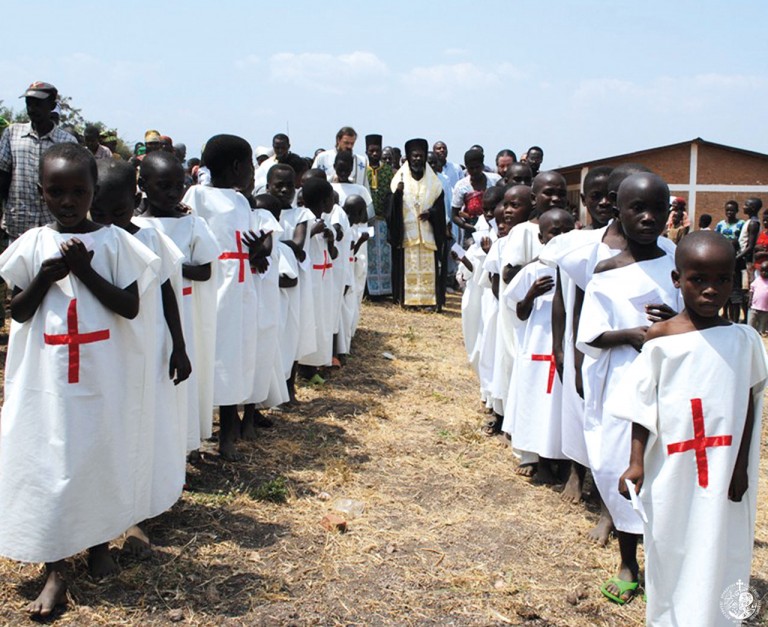
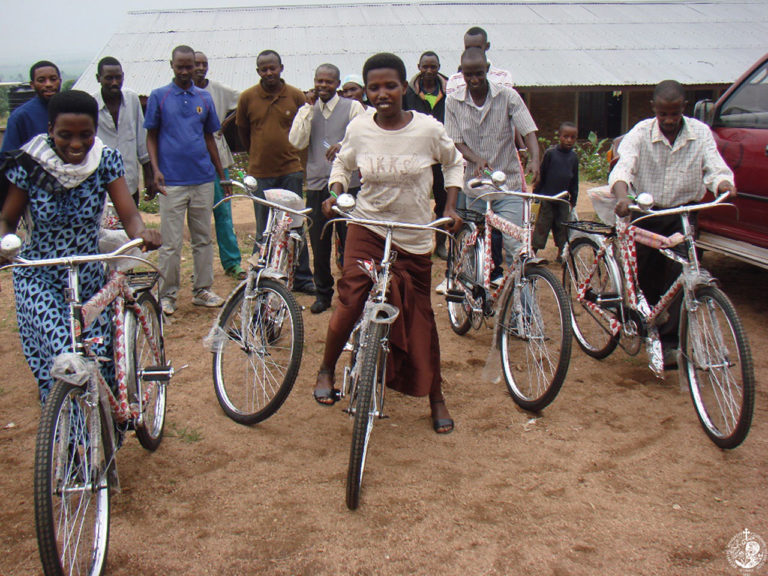
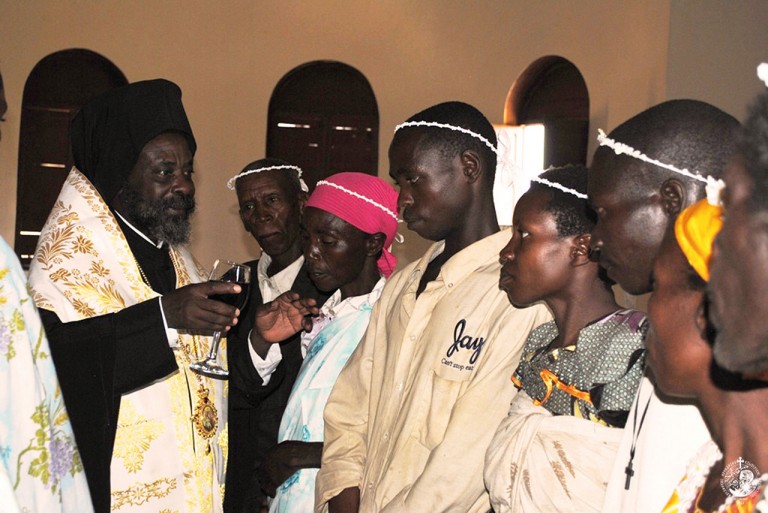
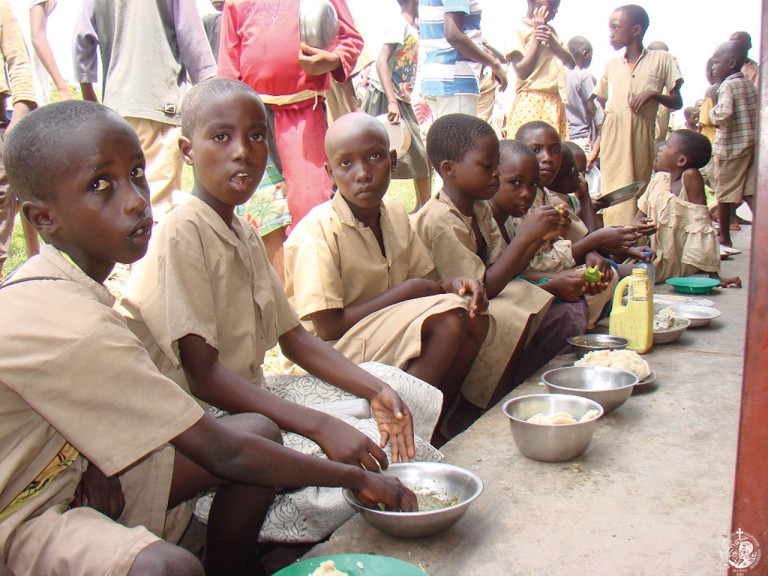
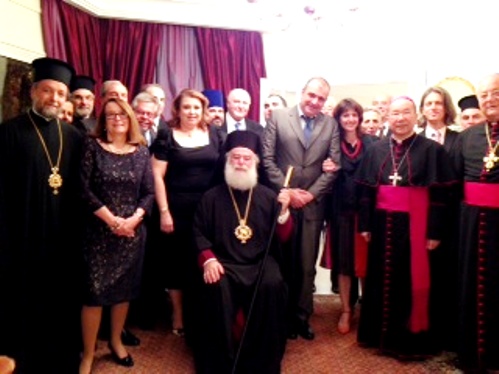


![Photo_01[1]](http://www.katixitiko.gr/wp-content/uploads/2014/03/Photo_011-547x360.jpg)



































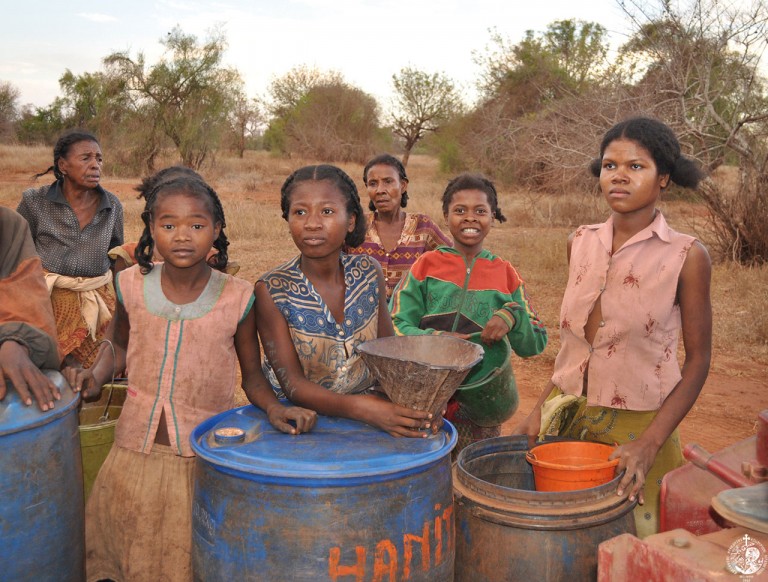



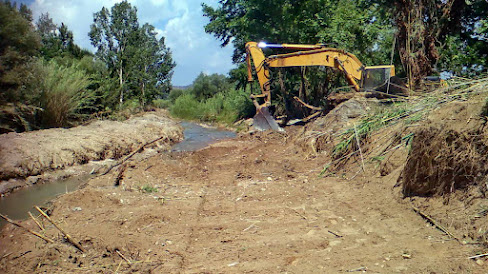
.webp)


.jpg)

